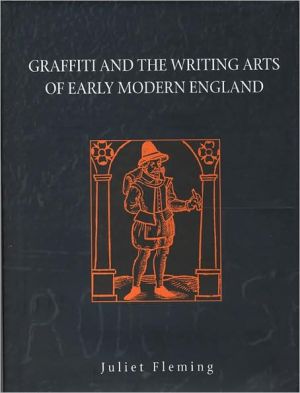

 |

|

The average rating for Graffiti and the Writing Arts of Early Modern England based on 2 reviews is 4.5 stars.
Review # 1 was written on 2009-11-16 00:00:00 Colin Walsh Colin WalshHere Be Dragons traces the development of bestiary from ancient times, from a period as early as the Neo-Sumerian period in 2150 BC to modern times. Within its pages, the reader encounters strange creatures with the bodies of animals and human heads or vice versa. There are also unicorns and chimeras, minotaurs, dragons, sphinxes and demons from all cultures. Bestiary is a worldwide phenomenon. It is the extension of the human mind, a manner for our brains to understand and make sense of things which seem too impossible to comprehend. Marco Polo's Book of Marvels documented both dragons and unicorns for example and the ba of the dead fluttering over a corpse was drawn in Egypt's Book of the Dead. Ancient Persian art depicts a flying ibex and a beautiful statue from 1840 shows Roger and Angelica mounting a Hippogriff, a mythical creature born of the union between a mare and a griffin. Sixteenth century Vietnamese ceramics depict images of a dragon fish, while the Batak people from Indonesia created house ornaments in the shape of a singa. A beautiful bronze chimera from fifth century China stands toe to toe with the Dog of the Seven Sleepers from Mughal India. The Temptation of St. Anthony from 1487 shows the saint literally being pulled apart by demons. This book documents the development of these creatures of fantasy across the globe. Indeed, griffins, dragons and a host of other bestiary are alive in our modern world, too. We have only to close our eyes to imagine the impossible. |
Review # 2 was written on 2017-03-31 00:00:00 Louisa-magdalene Papadopoulou Louisa-magdalene PapadopoulouFleming examines literacy through 16th century English graffiti and inscribed objects, decorated with visual patterning as well as text. She argues that the boundaries between writing and visual ornamentation were fluid, and that literacy was not limited by what was written on paper. These more ephemeral writings were document a writing which challenge late modern notions of literacy. Graffiti and object inscriptions were detached from the authorial subjectivity, and regarded as materialized thought. In this way, wall writings, tattoos, and inscriptions on domestic objects and clothing, had an expressive consciousness that existed independently of the writer. |
CAN'T FIND WHAT YOU'RE LOOKING FOR? CLICK HERE!!!